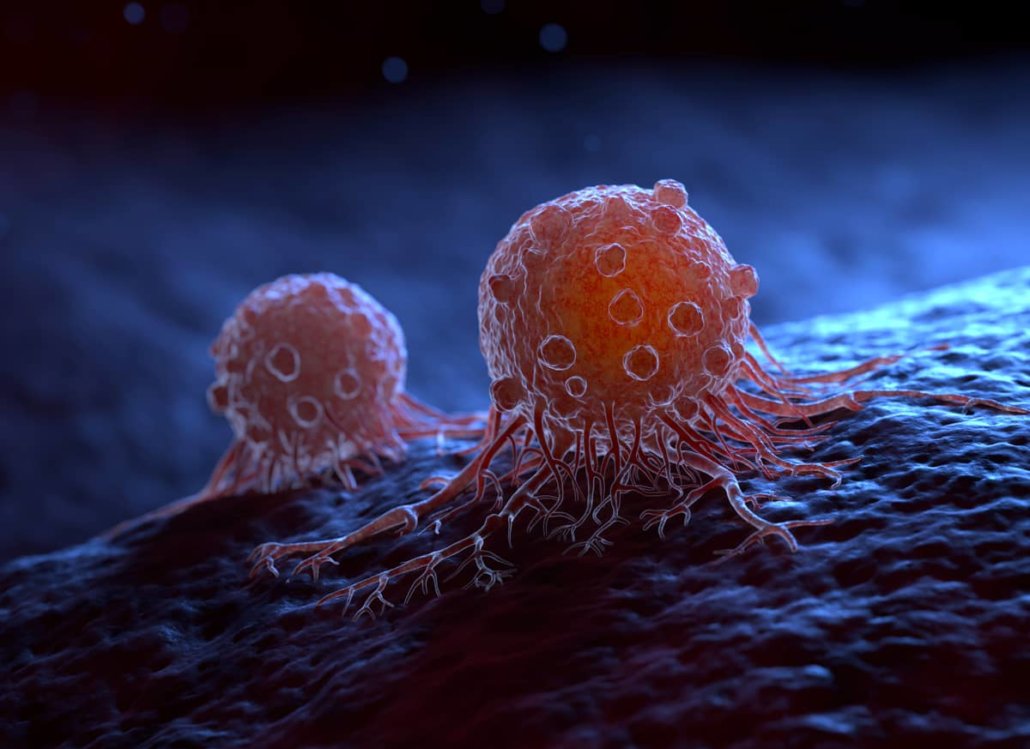Soft tissue metastases – complex origin
Soft tissue metastases usually develop as a result of an advanced stage of cancer, for example in colorectal cancer, lung cancer, breast cancer or prostate cancer. Depending on where the main tumor grows, metastases often develop in the surrounding lymph nodes or in adjacent tissue. However, metastases can also develop far away from the primary tumor.
Before radiation – find metastases!
Soft tissue metastases can be very difficult to find, and the symptoms that occur are very different and varied. In the course of follow-up, different methods bring crucial information. CT and MRI can be used to diagnose soft tissue metastases.
Where can you have soft tissue metastases treated in Munich?
The tumour and its daughter tumours must be treated completely so that the treating team of doctors can draw up the right treatment plan together with the patient. Especially for the treatment of soft tissue metastases, additional radiation can be very effective. Our radiotherapy specialists draw up a plan that optimally and individually implements the respective therapy.

How are soft tissue metastases treated?
Identifying the original carcinoma is critical to developing a treatment plan because metastases are composed of cells from that primary tumor. Since cells respond differently to certain forms of treatment, accurate diagnosis is essential. In addition to the origin of the cancer cells, the location, size and spread of the metastases as well as the patient’s general state of health are also decisive for a suitable therapy:
- Surgical removal of soft tissue metastases
- Irradiation of the soft tissue metastases
- Drug treatment e.g. chemotherapy, hormone therapy, immunotherapy, antibody therapy
Operation
Whether surgery is an option for the patient must be decided on a case-by-case basis. In general, it can be said that few, clearly demarcated, rather larger metastases can be better removed surgically.
Used before surgery, chemotherapy and/or radiation therapy can help reduce the growth and spread of metastases. Under certain circumstances, this neoadjuvant therapy can make surgical intervention possible in the first place.
Chemotherapy
If surgery is not practical or is not an option for the patient, chemotherapy can be used. The goal of chemotherapy is to stop the spread of metastases and relieve tumor-related symptoms. However, the success of chemotherapy depends on the type and location of the metastases, as not all cancers respond equally well to this treatment.
Radiotherapy
Radiotherapy can be used before, after and in some cases instead of surgery. The type of radiotherapy used depends on the cancer cells themselves, their size and spread.
Alternative treatment methods
In certain cases, anti-hormone therapy, immunotherapy or targeted therapy may also be useful. The use of anti-hormone therapy is useful for those metastases when the growth of the main tumor cells is hormone-dependent (e.g.: breast cancer or prostate cancer).
Targeted therapy uses drugs that interfere with the metabolism of cancer cells. Immunotherapy strengthens the patient’s immune system in the fight against tumour cells.
What is the treatment process in our practices?
What do you need to pay attention to before, during and after treatment?
Metastases are usually a sign of an advanced stage of cancer. The primary goal is to treat the main tumor and metastases in parallel. Here, an attempt is made to stop or at least slow down the growth and spread of the cancer and metastases.
During regular follow-up examinations, CT and/or MRI are used to check whether the cancer has spread further and whether the treatment was successful. During these check-ups, it is also important to assess the patient’s general condition. With the help of this regular follow-up, a relapse can be detected quickly and countermeasures can be initiated quickly and efficiently.
Please discuss with your doctor any side effects of the therapy or if you notice that your condition is getting worse. Individual alleviation of the side effects of treatment can then be carried out. This in turn contributes to increasing your quality of life.
What are the side effects of soft tissue metastases treatment?
The treatment of metastases and cancer in general is very stressful for many patients – both psychologically and physically. This is especially true in advanced stages of cancer. Thus, side effects may occur during the individual treatment steps, but also for some time afterwards, depending on the type of cancer and the form of treatment.
Operations are generally associated with a certain risk. Depending on the part of the body in which the cancer or metastasis is treated and how extensive the surgical procedure is, different side effects may occur: Damage to nerve cells, wound healing problems, infections or pain.
Chemotherapy, like radiation therapy, primarily attacks rapidly renewing cells. This applies to cancer cells, but also to healthy cells, such as: Blood, hair and mucous membrane cells. This is the reason why patients often experience side effects such as decreased immunity, fatigue, hair loss, nausea and diarrhea.
Despite a carefully planned treatment plan, radiation affects healthy cells as well as cancer cells. Therefore, depending on the irradiation region in the body, different side effects can be observed here such as: Skin redness, inflammation of the mucous membranes, dry mouth, difficulty swallowing, symptoms of cystitis or diarrhea. It is important to mention that side effects are usually expected only in and around the irradiated region.




